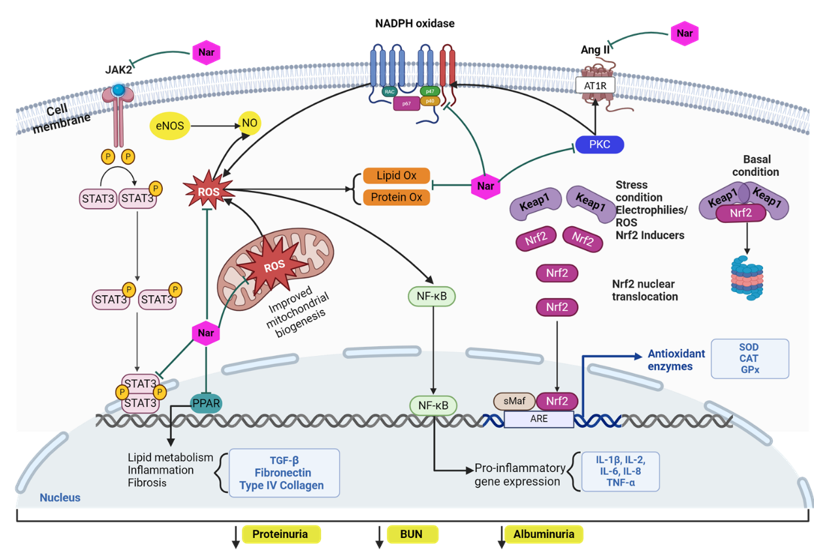Naringenin – a potential nephroprotective agent for diabetic kidney disease: A comprehensive review of scientific evidence
DOI:
https://doi.org/10.17305/bb.2024.10511Keywords:
Diabetes, chronic kidney disease (CKD), naringenin, oxidative stress, hypertension, inflammationAbstract
Diabetes mellitus (DM) is a chronic disease characterized by persistent hyperglycemia, which is a major contributing factor to chronic kidney disease (CKD), end-stage renal disease (ESRD), and cardiovascular-related deaths. There are several mechanisms leading to kidney injury, with hyperglycemia well known to stimulate oxidative stress, inflammation, tissue remodeling, and dysfunction in the vascular system and organs. Increased reactive oxygen species (ROS) decrease the bioavailability of vasodilators while increasing vasoconstrictors, resulting in an imbalance in vascular tone and the development of hypertension. Treatments for diabetes focus on controlling blood glucose levels, but due to the complexity of the disease, multiple drugs are often required to successfully delay the development of microvascular complications, including CKD. In this context, naringenin, a flavonoid found in citrus fruits, has demonstrated anti-inflammatory, anti-fibrotic, and antioxidant effects, suggesting its potential to protect the kidney from deleterious effects of diabetes. This review aims to summarize the scientific evidence of the effects of naringenin as a potential therapeutic option for diabetes-induced CKD.
Citations
Downloads

Downloads
Published
Issue
Section
Categories
License
Copyright (c) 2024 Estefania Valle-Velázquez, Oscar René Zambrano-Vásquez, Fernando Cortés-Camacho, Laura Gabriela Sánchez-Lozada, Gustavo Guevara-Balcázar, Horacio Osorio-Alonso

This work is licensed under a Creative Commons Attribution 4.0 International License.









